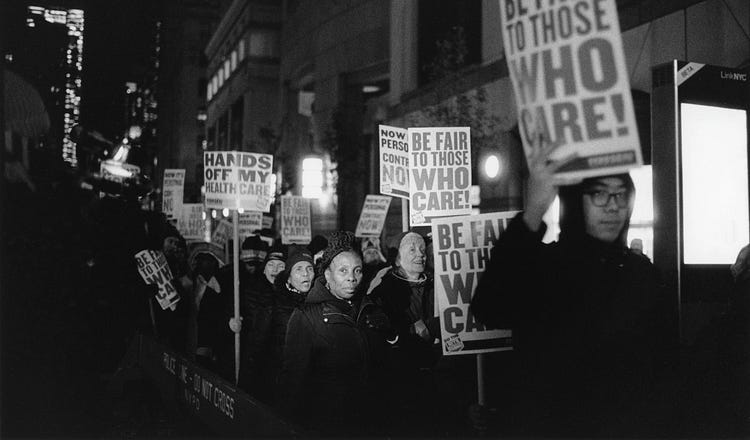Portraits of a Democracy

SEIU demonstration at Rite-Aid, 8th Avenue at 52nd Street, November 22, 2016.
With a camera and a curious eye, Bill Meyers shows how our republic fails—and triumphs—in small ways, every day.
4
The photographs of Bill Meyers, 84, tend to focus on less flashy moments in the American story. Instead of great wars won or peaceful transfers of power, he captures moments like a hopeful candidate shaking hands with constituents in Harlem, or a pod of urban planners huddling around a blueprint.
“When you’re talking about civics, you can start at the D…
Continue Reading The Free Press
To support our journalism, and unlock all of our investigative stories and provocative commentary about the world as it actually is, subscribe below.
$8.33/month
Billed as $100 yearly
$10/month
Billed as $10 monthly
Already have an account?
Sign In

